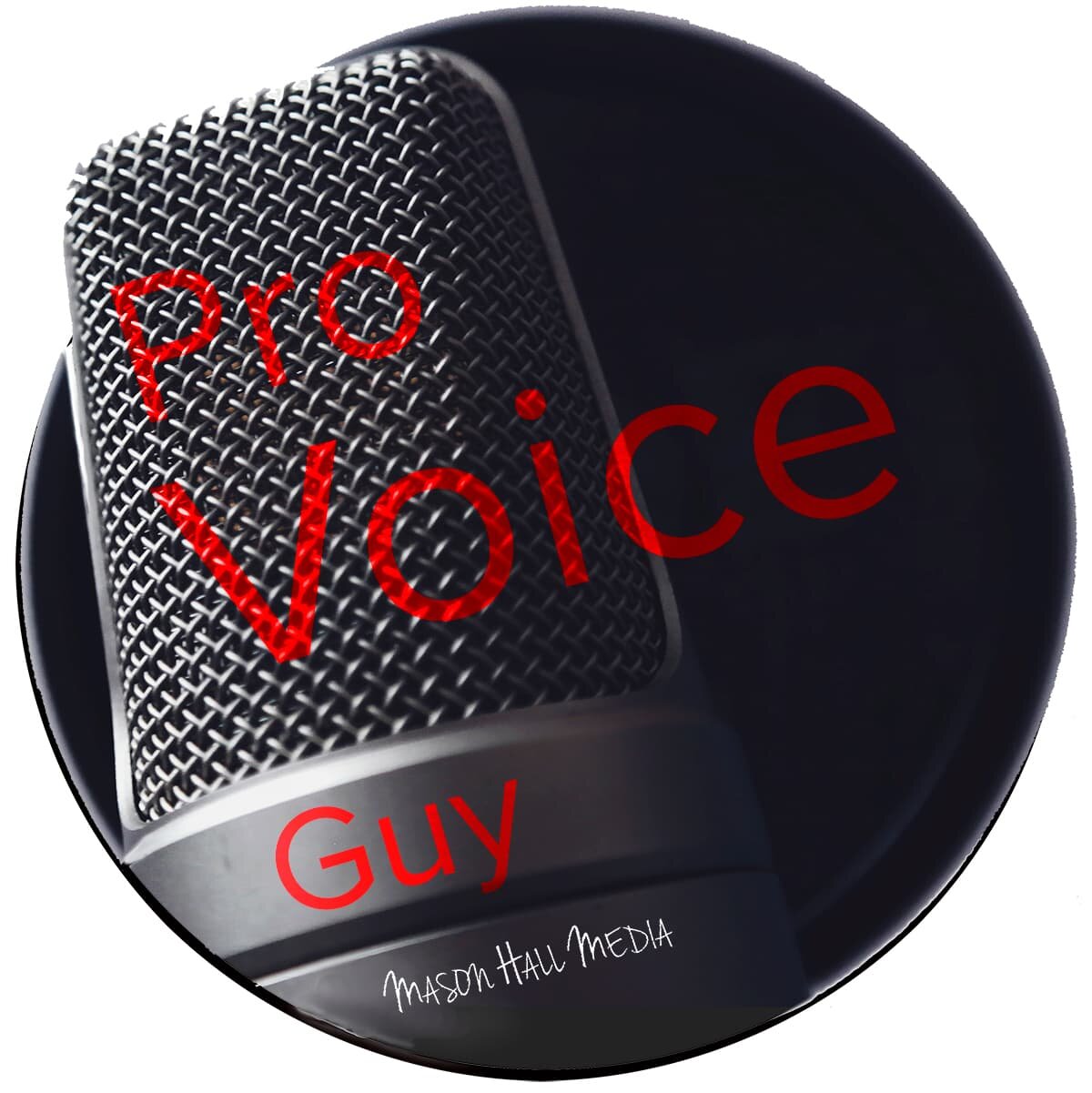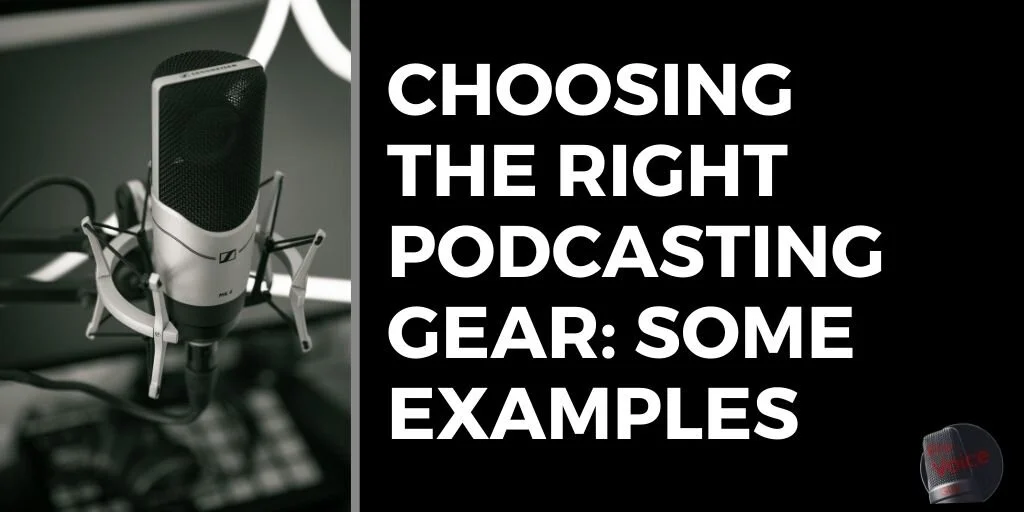Choosing the Right Podcasting Gear: Some Examples
I wanted to follow up on my previous post, Choosing the Right Podcast Equipment, with some examples of podcasting gear setups. These are just examples, but they may help us see some of the ways these things can work together. Once you understand how all the pieces go together, you can mix and match until you find the right gear for your podcast. I have also provided examples at four different price points. There are less expensive and more expensive options for each type of setup. Eventually, you just need to decide what you are trying to do and how much money you can afford to spend. After that, it is just a matter of getting it to sound as good as possible.
I have turned the comments on, so feel free to post any questions. I love answering questions here so other people can learn from them as well.
All of these packages assume that you already have a Mac or PC unless they explicitly don't need a computer.
Podcasting Gear Setup One: Solo Podcast Host on a Budget
Budget: ~$100
Number of Hosts/Guests: 1
Portability: Moderate
Setup Challenges: Less than perfect acoustics
Mac or PC: Either
Tech Difficulty Level: Low
Hardware:
Audio-Technica AT2005USB Cardioid Dynamic USB/XLR Microphone $79
The Audio-Technica AT2005USB Cardioid Dynamic USB/XLR Microphone can connect directly to a computer using USB or to an audio interface via XLR.
Notes: This is a great price on a really solid microphone. Being a dynamic mic, it should help with any sound issues in the space like a little echo or some stray background noise. You should take advantage of the built-in headphone jack to monitor what is being recorded with no delay. You can use your wired earbuds or upgrade to something like these Sony MDR-7506s. Some of my favorite headphones. What I really like about this mic is that it can connect over an analog XLR cable or a digital USB connection. If you are just getting started, you are probably going to want to plug this right into your computer with a USB cable. However, if you upgrade your setup later, the XLR connections gives you more options. It comes with a stand that will work but there are a number of ways to mount the mic including a boom arm attached to your desk. If you are willing to pay just a little bit more, you can pick up the mic, stand, and headphones with the Audio-Technica AT2005USBPK Vocal Microphone Pack for Streaming/Podcasting, Includes USB and XLR Outputs, Adjustable Boom Arm, & Monitor Headphones. You may also want to throw in a pop-filter or windscreen like the On-Stage Foam Ball-Type Microphone Windscreen.
Setup Two: Two Podcasts Hosts, No Computer Needed for Recording
Budget: ~$850
Number of Hosts/Guests: 2
Portability: Low/High
Setup Challenges: Want to record without needing a computer
Mac or PC: Neither needed for recording
Tech Difficulty Level: Low
Hardware:
2 - Rode Procaster Broadcast Dynamic Vocal Microphones $227
1- Zoom H4n Pro 4-Track Portable Recorder $229
2 - Rode PSM1 Shock Mount For Podcaster, Procaster, PSA1, and DS1 Microphones $39
1 - Cable Matters 2-Pack Premium XLR to XLR Microphone Cable 15 Feet $22.99
2 - Hola! Music HPS-101TB Professional Tripod Microphone Mic Stand with Telescopic Boom $34.92
Notes: I actually recommended this system to a client. This could easily be a portable unit, but that is not why they wanted it. They wanted something simple to use. They click record, and when done, eject the SD card, transfer it to a computer and send it to their producer. I was really impressed how great it sounds when they really had no experience with something like this. This would work fine as a permanent setup, but it breaks down pretty quickly if you are looking for something that you can take with you. There are more portable options, but this would work.
Podcasting Gear Setup Three: Up to Four Hosts/Guests
Budget: ~ $1000
Number of Hosts/Guests: 4
Portability: Mid
Setup Challenges: None
Mac or PC: Either
Tech Difficulty Level: Mid
Hardware:
4 - Shure SM58-LC Cardioid Dynamic Vocal Microphone $99
1- Focusrite Scarlett 18i8 (3rd Gen) USB Audio Interface $419.99
2 - Cable Matters 2-Pack Premium XLR to XLR Microphone Cable 15 Feet $22.99
1 - Mackie HM Series, 4-Way Headphone Amplifier Mixer Accessory 1-ch x 4 headphones (HM-4) Black $39.99
4 - Hola! Music HPS-101TB Professional Tripod Microphone Mic Stand with Telescopic Boom $34.92
Notes:
For this package, since there are four mics, I went with a less expensive Shure microphone. SM58s are the workhorse of the audio industry. They sound great and, if you drop them, they will likely be fine. The Focusrite Scarlett connects those analog mics to your computer and lets you control the gain on each one to get it right for each host or guest. There are two headphone outputs, so if you want everyone to have headphones, you will need to add a splitter or headphone amplifier. Mackie has always been really good to me for accessories like these.
Setup 4: A More Permanent Solution
Budget: ~$3000
Number of Hosts/Guests: 4
Portability: Mid
Setup Challenges: None
Mac or PC: Either
Tech Difficulty Level: Mid
Hardware
4 - Shure SM7B Cardioid Dynamic Microphone $399/each
1 - Rode RODECaster Pro Podcast Production Studio $599
4 - Gator Frameworks Deluxe Desk-Mounted Broadcast Microphone Boom Stand 89.99/each
2 - Cable Matters 2-Pack Premium XLR to XLR Microphone Cable 15 Feet $22.99/each
4 - Sennheiser Pro Audio HD280PRO Headphone $79.99/each
1- SanDisk 128GB Ultra MicroSDXC UHS-I Memory Card with Adapter $19.49
Notes: While the RODECaster Pro is certainly portable (you can get a custom hardshell case for it), this setup is, in general, not so mobile. This is especially true of the microphone stands. If you got the place to mount them, they work really well with these fantastic Shure SM7B microphones. The RODECaster has 4 headphone jacks, so you may want to consider these Sennheiser headphones. You can pay way more or way less, but these are really great for the price. This can get more expensive if you want to get some custom broadcasting furniture and fancy chairs.












